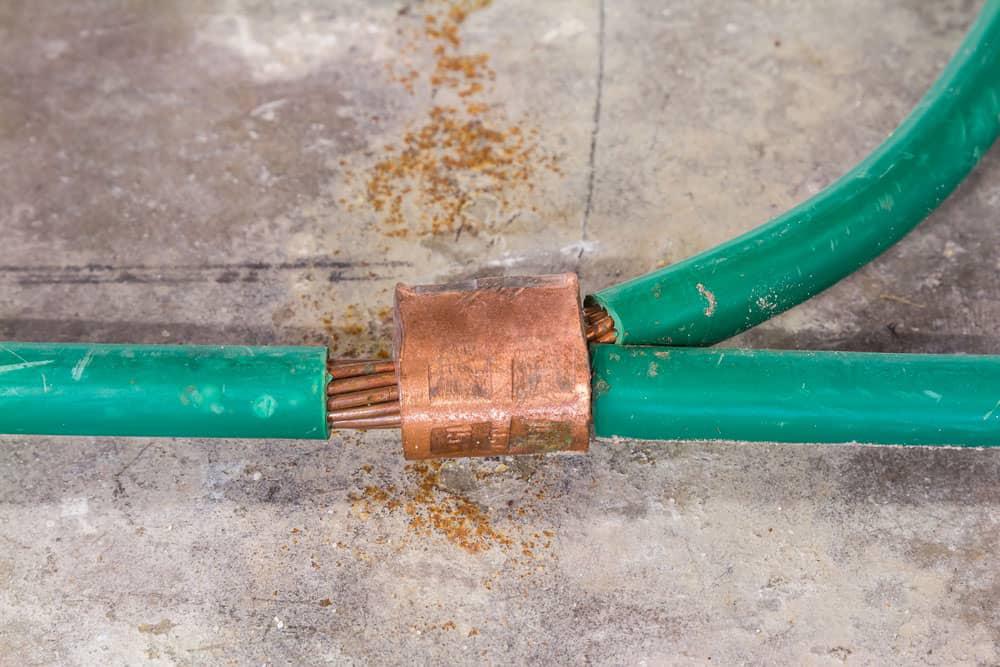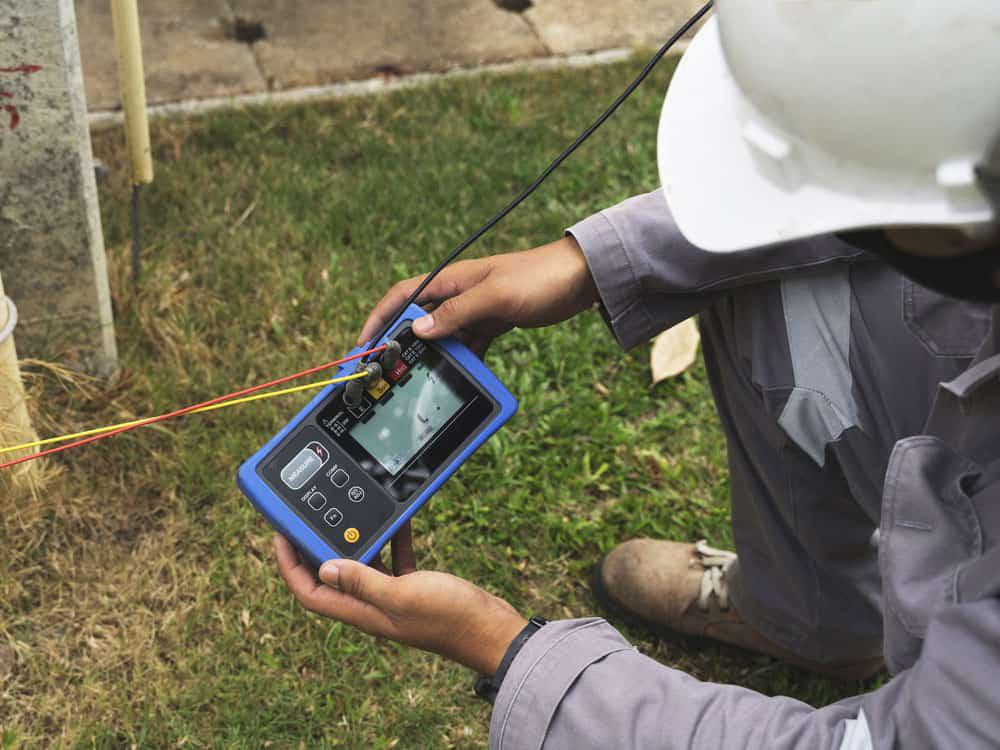Test uziemienia-Jak wiecie, uziemienie systemu elektrycznego zapobiega przepięciom Jeśli powierzchnia przewodząca nie zostanie uziemiona, może być naładowana Kiedy dotykasz takiego systemu, prąd przepływa przez ciebie na Ziemię Okazuje się, że jesteś zaskoczony Dobry system uziemienia zapewnia bezpieczeństwo osobiste i własność przed wysokim napięciem, prądem awaryjnym i nieoczekiwanymi pożarami Dlatego należy upewnić się, że system działa poprawnie Aby to zrobić, można przeprowadzić testy na terenie
Co to jest ziemia
According to the National Electrical Code, ground means “conducting connection”. This can be an accidental or intentional connection between an electrical circuit and the earth through a. You can also use any other conducting body in place of the earth. If wired properly, your devices are safe from excess electrical current. The NEC also suggests not using earth as the sole equipment for grounding.
When you talk about grounding, it is of two types:
Earth grounding: A connection from the neutral conductor to the ground electrode of the earth.
Equipment grounding: In this connection, you ground the equipment in the structure.
Make sure that you keep these two grounding systems separate. However, do not forget to connect these two systems. These grounding systems prevent voltage differences, providing a safe path for fault currents, static discharges, EMI, and lightning strikes.

Image: Electrical grounding connection
Now when it comes to good ground and its resistance values, you cannot stick to one. Ideally, the resistance value of the ground should be zero ohms. However, there is no standard ground resistance value that is acceptable to all agencies. According to NFPA and IEEE, good ground must have a resistance value of 5.0 ohms or less.
The NEC recommends that the system impedance be less than 25 ohms. In areas with sensitive equipment, this value should be 5.0 ohms or less. The aim is to achieve the lowest ground resistance value that is economically and physically possible.
Test uziemienia-What Is a Ground Test?
When you do a ground test, you get to know several issues with the grounding systems. These can be:
Bonding problems: In grounding, you connect your systems to the earth. However, bonding means the components through which you connect your system to the grounding system. If your bonding is not correct, it may not work. In the absence of good bonding, you cannot create a low-impedance path to allow short-circuit currents to flow to the ground. To check for effective bonding, you mostly need to do a visual inspection only. In case you find any fault and change the bonding jumpers, modify or add any equipment, just repeat your visual inspection.
However, visual inspection of bonding does not reveal incorrect neutral-to-ground connections.
Grounding system inadequacies: How do you check the efficacy of a grounding system? According to NEC, the resistance value should be less than 25 ohms. If it is higher, place another ground rod to decrease the value. However, besides NEC, you can have your concerns regarding grounding systems.
For example, you are using a lightning system for better security, or you may use a low resistance to offer a great environment for your electrical devices. The value of resistance depends on the area of equipment used and the type of soil.
While performing a ground test, you can identify a figure and consult the professionals in your area.

Image: electrical equipment ground resistance tester for protecting the electric system
Test uziemienia-The Importance of Ground Testing
Ground testing is important for various reasons such as:
If your grounding system is inefficient, it can lead to a loss of data. Further, during electrical malfunctions, it can also cause damage to equipment and loss of human life.
Equipment that works without a grounding system may face voltage surges or spikes.
If the grounding system does not work, sensitive equipment may lose data completely.
Bad grounding systems can create various fault currents. These currents result in shocks and equipment failures. You cannot pinpoint these defects easily.
In an inefficient grounding system, static charge builds up on the equipment. As a result, they may give shocks. This may lead to expensive repairs and the replacement of equipment parts.
Ground Testing Techniques
Here are four techniques that you can use for ground testing.
Test uziemienia-Soil resistivity test
This test is the most commonly used. You can use this for testing recently installed grounding systems. As the soil has many layers, it can alter the resistance greatly. You can check the soil resistivity with a ground resistance tester. To perform this test, follow the procedure:
Firstly, connect all four connecting lines of the device to the ground connector.
Place all the lines in one line at an equal distance. Make sure that the distance between them is thrice their length.
Now, create a known current between the outermost stakes. Calculate the voltage drop within the inner stakes.
You can use this drop in voltage potential for calculating soil resistance. You can calculate resistance with ohm’s law (V=IR)
Several factors can affect soil resistivity. To ensure a suitable configuration, you should develop a profile for the area. For this, conduct repetitively with stakes placed in different directions. Calculate resistivity at different points.
Fall of Potential
You can use this method to test individual stakes or whole grounding systems. With this, you can measure the capacity of grounding systems to dissipate electric currents. To perform the test, follow the procedure:
Firstly, disconnect the stake to be tested with the system.
Secondly, connect the testing apparatus to the stake (known as the Earth electrode).
Thirdly, embed two other stakes (outer and inner) with the first electrode. Keep these two in line with the first one.
Finally, connect the two stakes. A known current will flow through the stake (outer) and the earth electrode.
Test uziemienia-Stateless
As the name suggests, this method does not use stakes. As a result, you are saved from the risks of disconnecting electrodes. Further, you need not look for the proper locations to set the test stakes. You can perform this convenient stalkless testing from anywhere. To perform the test, follow the procedure:
Firstly, set the clamps near the earth electrode.
Secondly, pass a known current from one clamp and measure it at another one.
The ground tester will calculate the loop resistance of the earth’s ground. If there is only one path for the current to pass, the stateless method will not work.
Selective
This method is quite similar to the fall-of-potential ground test method. However, as you need not disconnect electrodes in it, this is much safer than that. To perform the test, follow the procedure:
Firstly, place a clamp meter near the earth electrode. This eliminates any parallel resistance effects.
Secondly, place outer and inner stakes similar to that of the fall-of-potential test.
Now, connect the tester to the clamp meter and the stakes.
Finally, note down the readings.
Test uziemienia-Things to Remember When Doing Ground Testing
Before performing these tests, you must understand some essential elements.
Firstly, use specifically made devices for ground testing, such as a dedicated ground tester.
Secondly, understand the test, its tools, and the right procedure for it. Learn how to operate different tools used in the ground test.
Thirdly, try to understand and measure the area around the ground electrode. This is important to get the right results.
Finally, put all the probes properly in their position and adjust their location in respect of buried objects and moisture pockets.
Conclusion
To test grounding systems’ safety, there are several guidelines and standards by several agencies and organizations. No matter which guidelines you follow, ground connections and stakes are the same for all. Also, certain variables affect the readings you take, and thus you only get approximate readings. For example, measurements just after rainfall or when soil is dry are never correct. Besides this, you must also know the points of measurement and the correct procedure for testing.
An effective grounding system needs a proper connection of all cables, wires, and other components. If you need any help regarding this, contact Gloom.

